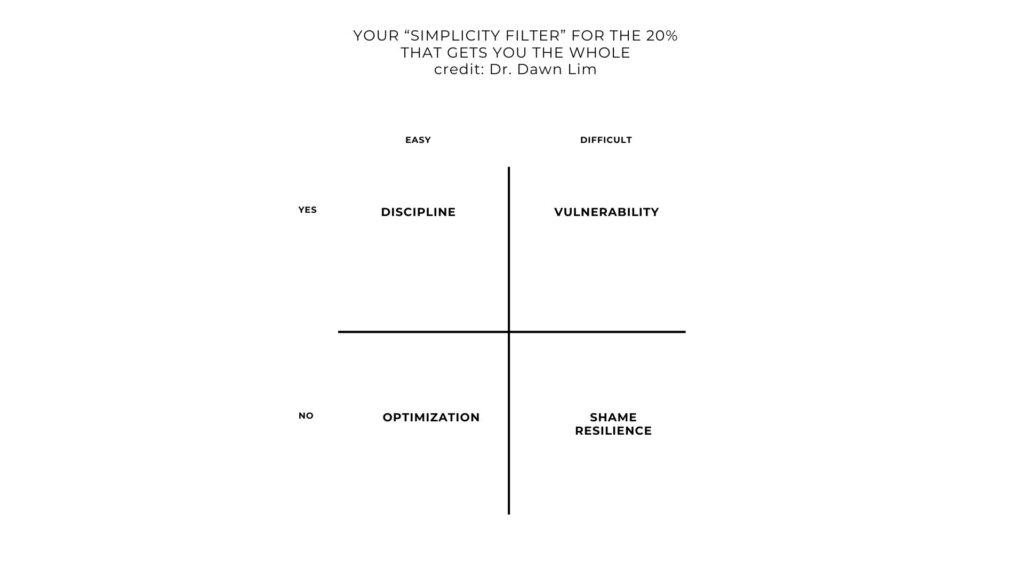To summarize it, this is how I map out the approaches to your great life.
So, the “easy-no” is where you want to optimize efficiency.
The “difficult-no” is where you want to understand your ego, internal validation and shame resilience.
The “easy-yes” is where you want to harness the power of rituals and habits with discipline.
And the “difficult-yes” is where you want to lean into vulnerability and courage.
If you were starting from ground zero, and feel overwhelmed, start with the “easy-no.” Build some space first with some easy wins. You won’t ever get rid of every thing you dislike, but you can certainly go far if you clear up even 1 hour every day.
The “difficult-no” should not be overlooked. When you reflect on how you label yourself, how you wish others to see you, and the identities or mindsets that are keeping you trapped, you can start to see the invisible burdens keeping you stuck. This might be a good chance to seek a therapist or a coach if you find it difficult to work through these ideas on your own. Be compassionate. The “difficult-no” is where most people never, ever go.
It’s been my experience that people feel significantly better with just these two steps.
But when you start inviting the joy, the “easy-yes,” just remind yourself–“this is why you are here, you are here to love and be loved–these are the memories you will hold onto till the end of your days.” And I hope you have lots of long, healthy, strong days ahead of you with your loved ones.
If you’ve still got the energy and want to reach back and help the person struggling behind you, look toward your purpose. The “difficult-yes” is a place of passion, value creation, and is personally fulfilling to you. We need more purpose-filled people like you out here.
That’s the simplicity filter.
Question: “Where will you start to get your great life?”
